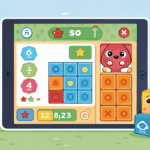In today’s competitive business world, your brand identity is much more than just a logo or a catchy slogan. It’s the soul of your business—the way customers recognize, trust, and connect with you. A strong brand identity helps you stand out, attract loyal customers, and communicate your values effectively.
If you’re starting a business or looking to strengthen your current brand, this guide will walk you through how to build a strong brand identity for your business—step by step.
What Is Brand Identity?
Brand identity is the visible and emotional expression of your brand. It includes your name, logo, colors, design style, tone of voice, and even the way you interact with your customers.
Think of it as your business’s personality. Just like people, every brand has a unique character that makes it memorable. For instance, Apple is known for simplicity and innovation, while Nike represents motivation and performance.
Why Brand Identity Matters
A strong brand identity:
- Builds trust with your audience.
- Helps you stand out from competitors.
- Makes your marketing more consistent and recognizable.
- Encourages customer loyalty and emotional connection.
- Adds long-term value to your business.
When people instantly recognize your logo or associate positive feelings with your name, you know your brand identity is working.
Steps to Build a Strong Brand Identity
Let’s explore the practical steps you can take to create a solid, lasting identity for your business.
1. Define Your Brand Purpose and Vision
Every successful brand starts with a clear purpose—the “why” behind what you do. Ask yourself:
- Why does my business exist?
- What problems am I solving for my customers?
- What change do I want to make in their lives?
Your purpose becomes the foundation of your brand. Combine it with a vision (what you aim to achieve in the future) and a mission (how you’ll achieve it) to create a clear direction for your business.
Example:
- Purpose: To make healthy eating accessible for everyone.
- Vision: To become the leading provider of organic meal kits worldwide.
- Mission: To deliver fresh, affordable, and eco-friendly meal solutions to busy families.
2. Understand Your Target Audience
You can’t build a strong brand if you don’t know who you’re talking to. Identify your ideal customers—their age, gender, lifestyle, interests, challenges, and values.
Conduct surveys, interviews, or online research to understand their needs and motivations. Once you know your audience, tailor your brand voice, visuals, and messaging to connect with them emotionally.
Tip: Create a customer persona—a detailed profile of your ideal customer—to guide your branding decisions.
3. Analyze Your Competitors
To stand out, you must know what others in your industry are doing. Analyze your top competitors:
- What are their strengths and weaknesses?
- How do they present themselves visually?
- What tone of voice do they use?
- What gaps can you fill that they’re missing?
This helps you identify opportunities to position your brand uniquely rather than blending into the crowd.
4. Create a Memorable Logo and Visual Identity
Your visual identity is what people notice first. It includes your:
- Logo
- Color palette
- Typography (fonts)
- Iconography
- Brand imagery and design style
These elements should reflect your brand’s values and personality. For example, a luxury fashion brand might use elegant fonts and minimal colors, while a children’s toy company might choose bright, playful visuals.
Consistency is key—use the same design style across your website, social media, packaging, and advertisements to build recognition.
5. Develop a Consistent Brand Voice
Your brand voice is how you communicate with your audience through words. It reflects your personality, tone, and values.
Ask yourself:
- Do I want my brand to sound professional or friendly?
- Should my tone be inspirational, educational, or entertaining?
- How can I make my writing feel genuine and relatable?
For instance:
- A law firm might use a confident and formal tone.
- A lifestyle brand might sound conversational and encouraging.
Once defined, use the same tone across emails, blogs, social posts, and customer interactions.
6. Craft a Strong Brand Story
People connect with stories, not sales pitches. Your brand story should share your journey, purpose, and the challenges you overcame to reach where you are today.
A great brand story:
- Evokes emotion.
- Builds credibility.
- Makes your brand human and relatable.
For example, if you started your business to solve a personal problem, share that story. Customers appreciate authenticity—it makes your brand feel real and trustworthy.
7. Build an Online Presence
In the digital age, your brand identity must shine online.
- Website: Make it visually appealing, user-friendly, and aligned with your branding.
- Social media: Use platforms that best suit your audience. Keep your posts consistent in tone and style.
- Email marketing: Personalize your messages while maintaining your brand voice.
Use visuals, storytelling, and engagement to create a community around your brand.
8. Maintain Consistency Everywhere
Consistency is what turns recognition into loyalty. From your website to your packaging, every customer touchpoint should reflect the same brand identity.
Create a brand style guide that defines your colors, fonts, logo use, voice tone, and content guidelines. This helps your team maintain a unified image, even as your business grows.
9. Evolve and Stay Relevant
Brand identity is not something you build once and forget. As your business grows and markets change, revisit your branding to ensure it still reflects your values and appeals to your audience.
Many big brands—like Coca-Cola, Starbucks, and Google—have refreshed their logos and messages over the years while keeping their core identity intact.
Adapt, but never lose your essence.
Final Thoughts
Building a strong brand identity takes time, creativity, and consistency. It’s not just about designing a logo—it’s about shaping how people feel when they think of your business.
When done right, your brand identity becomes your biggest asset. It helps you attract loyal customers, build trust, and grow your business with confidence.
Remember: Your brand is not what you say it is—it’s what people believe it is.
FAQs About Building a Strong Brand Identity
1. How long does it take to build a brand identity?
Building a strong brand identity can take anywhere from a few weeks to several months. It depends on the depth of research, design work, and marketing implementation. Consistency over time is what truly strengthens your brand.
2. Can small businesses build a strong brand identity without a big budget?
Absolutely! Focus on clarity, consistency, and authenticity. Use affordable design tools, build an engaging social presence, and communicate your story effectively. A powerful brand doesn’t always require a huge budget—it requires creativity and strategy.
3. What’s the difference between branding and marketing?
Branding is about defining who you are—your values, visuals, and voice—while marketing is how you communicate and promote that brand to your audience. Branding is the foundation; marketing is the action.
4. Should I hire a professional designer to create my logo?
If your budget allows, hiring a designer can ensure a high-quality, original logo that aligns with your brand vision. However, if you’re starting small, you can use tools like Canva or Adobe Express to create a simple but professional-looking design.
5. How often should I update my brand identity?
You don’t need to rebrand often. However, it’s smart to review your brand every 2–3 years to ensure it still fits your market, audience, and business goals. Minor updates can keep your brand fresh without losing recognition.



















